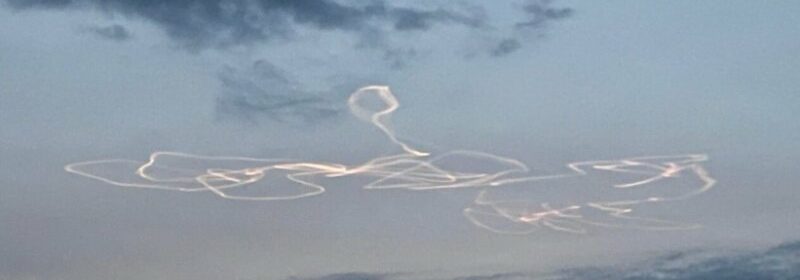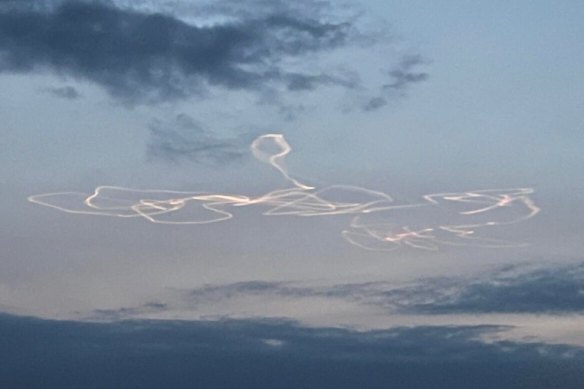Spider web of contrails force France to reveal hypersonic weapon test

Save articles for later
Add articles to your saved list and come back to them any time.
Paris confirmed that it had successfully conducted the maiden test flight of a hypersonic glider after various sightings of intricate trails in the skies above the Spanish and French Pyrenees.
Hypersonic gliders use a “boost-glide” launch system. First, a rocket propels the weapon into space before the payload glides back into the atmosphere to its target at hypersonic speed.
Locals in south-west France and northern Spain noticed the strange trails on Monday.
“These hypersonic gliders are capable of passing through the most sophisticated air defences: they are missiles that can reach unprecedented speeds of 6000 to 7000 kilometres per hour,” Florence Parly, the former French defence minister, said recently.
The non-ballistic nature of their flight path during atmospheric re-entry makes their trajectory unpredictable and thus hard to take down by enemy fire.
Meteo Pyrenees, the local weather forecaster was among the first to post a photo of the curious contrails in the sky that resemble a spider’s web over the Cazaux Air Base and “visible from a large part of the region”.
(Contrails, or vapor trails, are line-shaped clouds created by aircraft engine exhaust in the upper atmosphere. )
On Monday, numerous witnesses from south-west France and northern Spain reported sighting a very fast aircraft soaring at a high altitude and speed, leaving behind a distinct white trail.
Residents near Biscarrosse, in western France, were among the first to witness the flight shortly after 10pm local time. Onlookers then shared pictures in Bordeaux, Toulouse, and even in neighbouring Spain.
France’s Direction générale de l’armement (DGA), its procurement and technology agency, later confirmed that it had carried out the inaugural test firing of a sounding rocket carrying the V-MAX hypersonic glider demonstrator.
It turns out the glider is a demonstrator for the Véhicule Manoeuvrant Expérimental programme run since 2019 by the aerospace company ArianeGroup.
On Tuesday, the DGA said in a statement: “Equipped with many on-board technological innovations, this flight test was an unprecedented technical challenge that prepares the future of our national hypervelocity road map. France is one of the only countries in the world to have credible expertise in this field.”
“Bravo to all our teams who have worked on this flight and are committed every day to this programme,” it added.
Two years ago, the French defence ministry announced that the V-MAX demonstrator would complete its first flight “in the coming months” but nothing materialised.
Then, in a hearing last month ahead of the upcoming French Military Planning Law for 2024-2030, Charles-Henri du Ché, ArianeGroup’s military adviser, said that the demonstrator would fly “very soon”.
“We are therefore perfectly on time,” Mr du Ché said, adding that this initial demonstrator would lead to a second more advanced craft called V-MAX 2, “which could fly in 2024 or 2025″.
Experts had already warned on social media that a test launch was in the offing after noticing that France had created a restricted maritime area between June 26-30 spanning 2000 kilometres west of the DGA missile testing site in Biscarrosse, into the Bay of Biscay and the Celtic Sea. During that time, the zones are restricted because of “missile operations”.
Telegraph, London
Get a note directly from our foreign correspondents on what’s making headlines around the world. Sign up for the weekly What in the World newsletter here.
Most Viewed in World
From our partners
Source: Read Full Article
